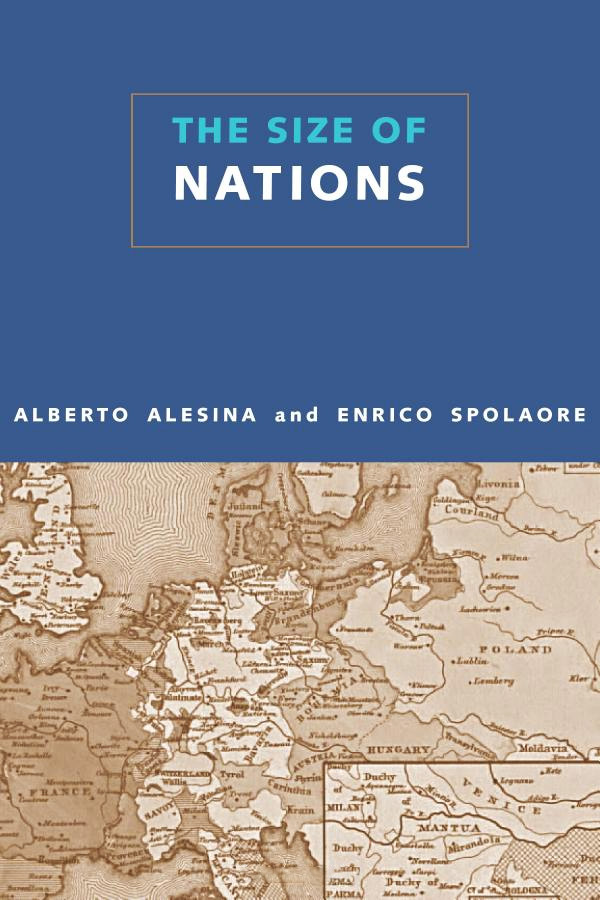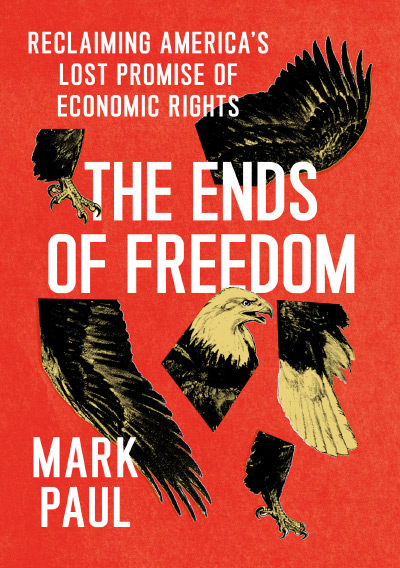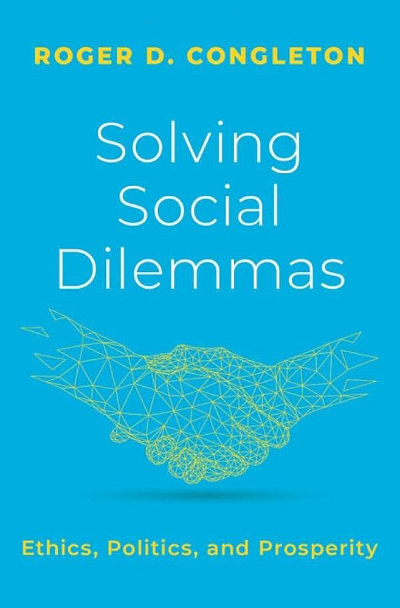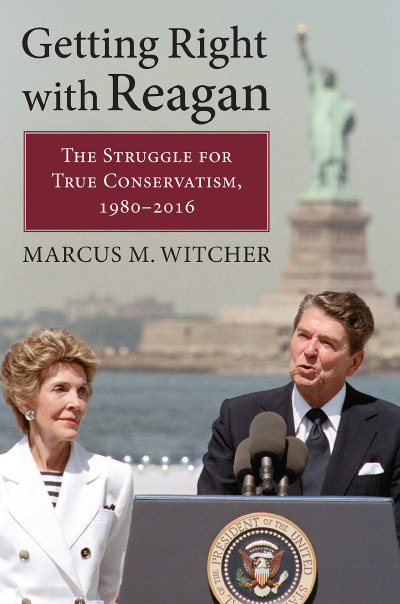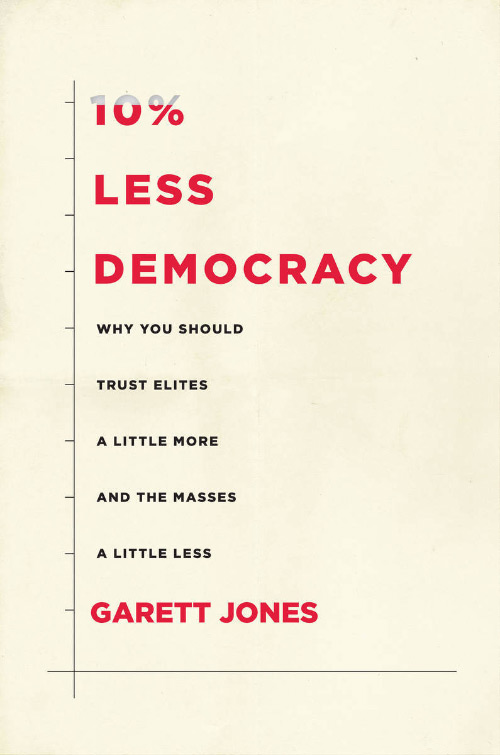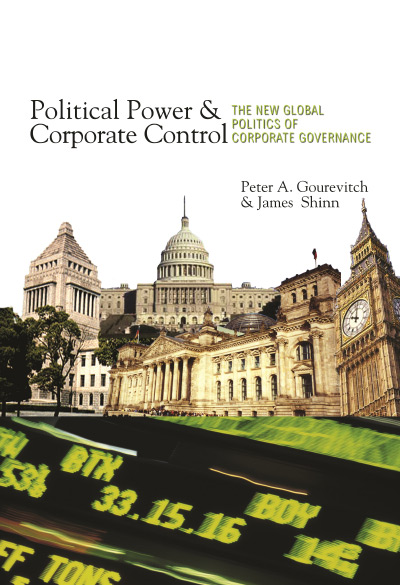In The Size of Nations, Alberto Alesina and Enrico Spolaore investigate two interesting and related issues: how big a nation ought to be and how big nations will be. Their central assumptions are that the advantage of large nations is economies of scale in the production of public goods and the disadvantage is the increasing heterogeneity of a population as its size increases. A big nation can spread the cost of producing public goods over more people, thus reducing the cost per capita, but in doing so it runs into the “one size fits all” problem. The amount and nature of the public good produced may be close to optimal for all of the members of a small, homogenous population, but the larger the nation is, the larger and less homogeneous its population becomes. For individuals whose preferences are far from those the public good is designed to satisfy, it may not be worth its cost. Indeed—a point the authors do not mention—its value may be negative. Consider the “public good” of enforcing religious conformity.
A second simplifying assumption—wildly unrealistic but very useful when it comes to providing formal mathematical proofs—is that the world can be represented by a line, nations being segments on that line, and that an individual’s position on the line represents both geography and preferences. Thus, the center of the segment corresponding to a nation represents both its geographical center and its median voter’s policy preferences.
Given these assumptions, the calculation of what the size of nations should be is in principle straightforward—the size that maximizes the summed benefit to everyone, defined in the usual economic sense, given both the costs and the benefits of larger or smaller nations. Calculating what the size will be requires additional assumptions that take two forms, representing two alternative views of government.
Democracy
Alesina and Spolaore’s democratic model assumes that the median voter determines the quantity and quality of public goods. It further assumes a voting procedure under which a nation may be divided by majority vote or two nations may be merged by separate majority votes in each. Additional constraints, such as a border resident’s freedom to switch countries, are added in parts of the analysis.
Majority voting leads to a problem. People on the periphery of a nation of optimal size pay the same price for public goods as those near the nation’s center, but they get public goods less well suited to their preferences. Hence, in a nation of optimal size it will sometimes be in the majority’s interest to vote to divide the nation in half, increasing the average cost of public goods, but in exchange getting more nearly the public goods they desire. Their benefit comes at the cost of individuals near the center of the original nation, who are now both paying higher taxes and getting public goods less well suited to their tastes than before the split.
The authors show that, in their model, democracy produces nations of less than optimal size. What they do not make clear is that this result is an artifact of the particular set of simplifying assumptions they use. It is easy enough to modify the assumptions to reverse the result—by making the cost of distance from the center increase more than linearly with distance in such a way as to produce a small population at the periphery that incurs very large losses because it is subjected to the public goods preferred by the center, but without enough votes to change the situation. What Alesina and Spolaore’s argument actually shows is that there is no good reason to expect majority vote to produce the optimal size of nation. That result is hardly surprising because economic efficiency does give some weight to the minority’s welfare, whereas majority vote does not.
Although their conclusion is unconvincing, their analysis raises an interesting and important point. Individuals near the center of an existing nation might be better off bribing those at the periphery to stay in the nation, thus continuing to hold down the cost of public goods while compensating those at the periphery for having to pay for public goods only imperfectly suited to their preferences. That arrangement provides a possible explanation for real-world situations, such as the preferences that Quebec has been able to obtain from its national government, arguably as the price of its not seceding from Canada.
Leviathan
The authors consider an alternative to democracy—Leviathan, a state ruled by a dictator and designed to maximize the amount he is able to extract from those he rules. In parts of their discussion, they seem to be arguing that the result will be a large nation simply because the dictator wants to rule more people in order to extract more from them. As they recognize when they get down to a formal treatment, however, that simple argument is wrong. Territory to be ruled is not available for free; in a world of dictators, each dictator is constrained by the existence of others competing for the same territories.
The authors deal with this problem by assuming that the outcome of such competition will be an efficient size of nations—from the standpoint of the rulers, not of the ruled. Territory goes to the ruler who values it most, so equilibrium is reached when the pattern of borders maximizes the total returns to all rulers combined.
They also assume that each ruler, in order to remain in power, must keep some fraction of the population upon whom he depends for support above some minimal utility level. They conclude, after adding that assumption to their model, that the size of nations will be greater than the optimal size if the required fraction is less than one half—which, they argue, it will be if the Leviathan is in fact a dictatorship.
An alternative interpretation of dictatorship is suggested by Ambrose Beirce in his Devil’s Dictionary: “An absolute monarchy is one in which the sovereign does as he pleases so long as he pleases the assassins.” In order to remain in power, a dictator must keep all of the population above some minimal level of utility so that nobody will have a sufficient incentive to revolt. Plug that restriction into the authors’ model, and dictatorship results in the same inefficiently small size of nations as democracy.
Free Trade and the Size of Nations
In a world where trade barriers between nations are common, one advantage of a larger nation is that it provides a larger marketplace free of such barriers. The authors conclude that a reduction in trade barriers will reduce the advantage of large nations and so reduce both actual and optimal size. One interesting implication is that the creation of the European free-trade area may actually increase the pressure for regional autonomy within European nations. The inhabitants of Wales or Catalonia know that their market is all of Europe, so they do not have to worry that secession would cost them access to the market of the nation of which they are presently a part.
A second implication is that a reduction in tariff barriers can conceivably have a perverse effect on freedom of trade. Even without explicit barriers, it is easier to trade within a nation than across national boundaries because doing so reduces problems arising from differing laws, customs, and languages. Reducing tariff barriers increases the number of nations. Tariff costs of trading across boundaries go down, but nontariff costs go up, and more boundaries must now be crossed.
This argument ignores a third effect, important but outside of the authors’ model. Smaller nations and freer trade increase the degree to which nations must compete for citizens and capital. That competition gives governments an incentive to shift to more efficient legal and political institutions— institutions that better serve those subject to them. Such effects are assumed away in a model where governments always produce the bundle of goods the median voter prefers.
The Evidence
A central assumption of the authors’ model is that the cost of producing public goods is lower in larger countries. To test that assumption, they examine various sorts of government expenditure in a large number of countries to see whether, on average, expenditure as a fraction of gross national product (GNP) decreases with the size of the country.
The findings provide only limited support for their position. Although total expenditure is on average lower relative to GNP for larger countries, the detailed pattern does not fit their assumption. National defense, for which the claim of economies of scale is plausible, does not show a statistically significant lower cost per capita in larger countries. Schooling—for which the claim is implausible because costs are for the most part per school and even a small nation has many schools—does show it.
Not only do the data fail to support the assumption adequately, but the prediction the authors test does not follow from the assumption it is purported to test. Suppose it were true that producing a given level of a public good cost less per capita in a larger country. One consequence would be that larger countries would choose to produce more of that public good, just as individual consumers buy more of a good when its price is lower. Just as a reduction in the price of beef may result in either an increase or a decrease in expenditure, according to whether demand is elastic or inelastic, so a reduction of the price of national defense may result in an increase or a decrease in expenditure on national defense. Unless we have some reason to expect demand for public goods to be inelastic—and the authors offer none—the assumption of economies of scale does not lead to the conclusion of lower expenditure. Yet that is the conclusion the authors test.
Consideration of the particular example of schooling suggests a possible explanation for the observed pattern. The cost of producing a given quality of public schooling is lower in a more homogeneous society because everyone agrees about what ought to be taught and how. Because it is less expensive, more is consumed. What the authors interpret as the problem of diverse tastes can equally well be seen as a diseconomy of scale—and, with an elastic demand, the result of a lower cost is higher, not lower, expenditure.
This observation brings me to one of my more serious reservations about the book. Although some things produced by governments, like some things produced by firms, can be expected to exhibit economies of scale, others can be expected to exhibit diseconomies of scale. A priori we have no reason to expect economies of scale to dominate, especially when we are talking about the range of nation sizes observed in the real world; even a small nation is the equivalent of a large firm, and it faces similar problems of administrative diseconomies. Yet the assumption of economies of scale is central to the authors’ argument.
A second reservation concerns the authors’ use of mathematical modeling. In places, it is useful as a simplified way of presenting the argument. The problem is that the formal presentation creates an illusion of rigor that is almost entirely unjustified because the conclusions, however rigorously derived, frequently depend on arbitrary features of the authors’ assumptions. In order to figure out which conclusions are artifacts of the assumptions and which are plausible inferences about the real world, one has to work out why the conclusions are or are not likely to be true outside the particular model—and if you do that, you don’t need the model.
I find much to disagree with in this book, but I also find in it a considerable number of points that are not obvious and may well be true. The problem of figuring out what determines the size of nations, actual or optimal, is not a simple one. Alesina and Spolaore at least have made a useful start. Moreover, it is clear in both the beginning and the ending of the book that they recognize many of the limitations of what they have done and regard their work as only a start.


